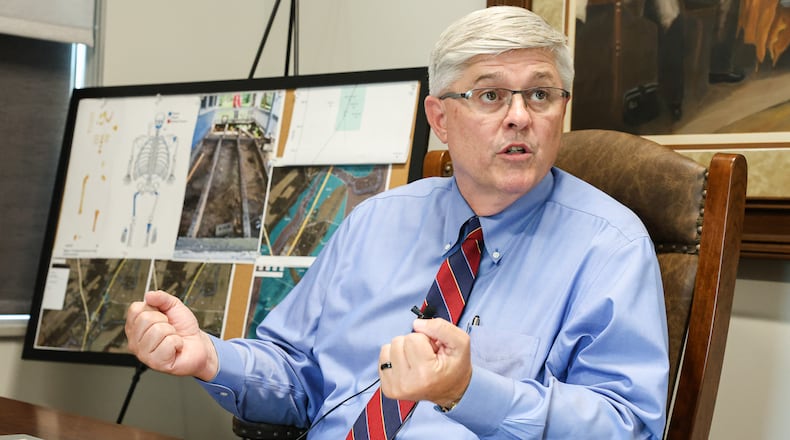The coroner’s office and Greene County Sheriff’s Office secured the scene and retrieved all the bones they could find.
“At the scene on the initial evaluation, it became clear that number one, the bones were old,” Greene County Coroner Kevin Sharrett said.
He described the bones as “historic,” meaning they’re more than 100 years old, but not pre-historic, which would be 1,000 years and older.
“We couldn’t tell how old they were but based on the staining from the soil and based on the state of decay of the bones, it was clear that the bones were old,” Sharrett said.
Investigators determined there were no signs of trauma or animal activity.
“There were no signs of any tampering with the bone,” the coroner said. “In other words, the bones we had were intact.”
However, they didn’t have any duplication. Crews recovered a left tibia, or lower left leg bone, and a right femur, which is the upper right leg bone.
“There was no duplication on the sides, which makes it a little more challenging for us,” Sharrett said. “The other thing that made it challenging is some the bones that we use for determining the sex of an individual, like the pelvis and certain parts of the skull, were not present.”
The coroner’s office worked with three forensic anthropologists who helped complete a forensic anthropologic autopsy.
They determined the bones were from a middle-aged adult and that the bones were historic, or more than 100 years old, Sharrett said.
“We were able to retrieve two molars, which have been very helpful because they helped us confirm that there were not prehistoric bones,” he said. “These aren’t caveman bones, but these are old bones.”
The coroner said the femur helped determine the individual was not a child but wasn’t geriatric either.
“It was someone that had exceeded their growth phase of their life, and yet the bones weren’t deteriorated in a way that we would see with age,” Sharrett said.
Investigators could not determine the sex of the individual.
“I can tell you that none of these bones exhibit any signs of trauma,” Sharrett said. “There does not appear to be any kind of injury inflicted to this individual.”
Determining the bones were more than 100 years old was one of the most important parts of the investigation because it meant the individual was not part of an open investigation or missing persons case.
“The first thought in my mind as we looked at these bones is number one, make sure these bones didn’t represent the bones of a child, because there are missing children everywhere,” Sharrett said. “Number two, make sure that these bones were of an age that they would not potentially represent the bones of a current open case.”
It’s not clear how the bones ended up under the porch.
The age of the bones are from a time period loosely defined from sometime in the 1600s to the 1900s, Sharrett said.
He said a major train rail was just behind the home, and it used to be a heavily traveled area.
There also was an article published on March 1, 1886, about a powder company in the area that had a major explosion that killed people, Sharrett.
“There were body parts that were found up to two miles away from that explosion site,” he said.
“I don’t anticipate that we’ll ever know the full story on these bones, but I’m confident and comfortable that they do represent the remains of an individual that is not recent and does not represent the remains of someone that is still being searched for."
The coroner’s office will store the remains in a respectful way in case additional information is available or additional bones are found near the property.
About the Author
